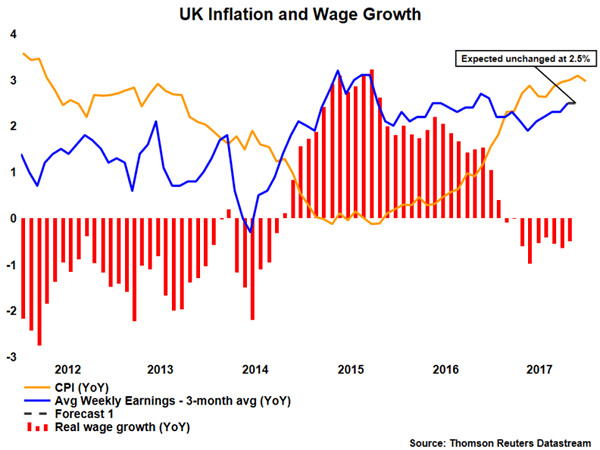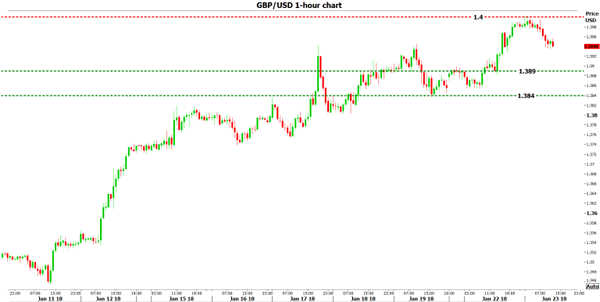UK employment data for November are due to be released on Wednesday at 09:30 GMT. Looking simply at economic forecasts, one may be tricked into thinking this data set represents little risk for sterling, as every indicator is projected to remain unchanged. The unemployment rate is forecast to have held steady at 4.3%, while average weekly earnings (both including and excluding bonuses) are anticipated to have grown at the same pace as previously.
What will markets focus on? Assuming the unemployment rate remains unchanged as anticipated, investors are likely to turn their attention to average weekly earnings, for any potential surprises. Wages are extremely important, especially in the context of the UK economy. Following the Brexit vote, inflation accelerated sharply, but wage growth remained largely flat, leading to a squeeze in the real incomes of UK consumers. This is one of the key factors that has deterred the Bank of England (BoE) from raising interest rates too much.
The Bank considers the surge in inflation to be a transitory effect that will fade over time, caused by the depreciation in GBP back in 2016. As such, it is reluctant to raise rates in order to fight high inflation, as that could weigh further on incomes and thereby, hurt consumption and the broader economy. Thus, an acceleration in wages would probably be a very pleasant development for policymakers, as it could open the way for the Bank to hike rates at a faster pace. Conversely, any slowdown in wages would probably keep the BoE sidelined for even longer.

So, what do gauges of the labor market suggest? The Markit UK report on jobs painted a relatively upbeat picture in November, indicating that staff appointments rose at the quickest pace for three months, and supporting the forecast for the unemployment rate to hold steady. In terms of earnings, it noted that despite easing slightly since October, wage growth remained sharp, amid strong demand for staff and a shortage of skilled workers.
A stronger-than-anticipated employment report, particularly on the wages front, could add to speculation that the BoE may raise interest rates faster than what is currently expected over the coming years. Something like that could add fuel to sterling’s recent rally, with sterling/dollar likely to surge and target its recent highs at 1.4000. A potential upside break of that territory could open the way for the 1.4050 zone, marked by the lows of March 2016.
On the contrary, a disappointment in this data set could cause sterling/dollar to give back some of its recent gains. Immediate support may be found near 1.3890, but if the bears are strong enough to overcome that hurdle, the next area that could come into play is 1.3840.













